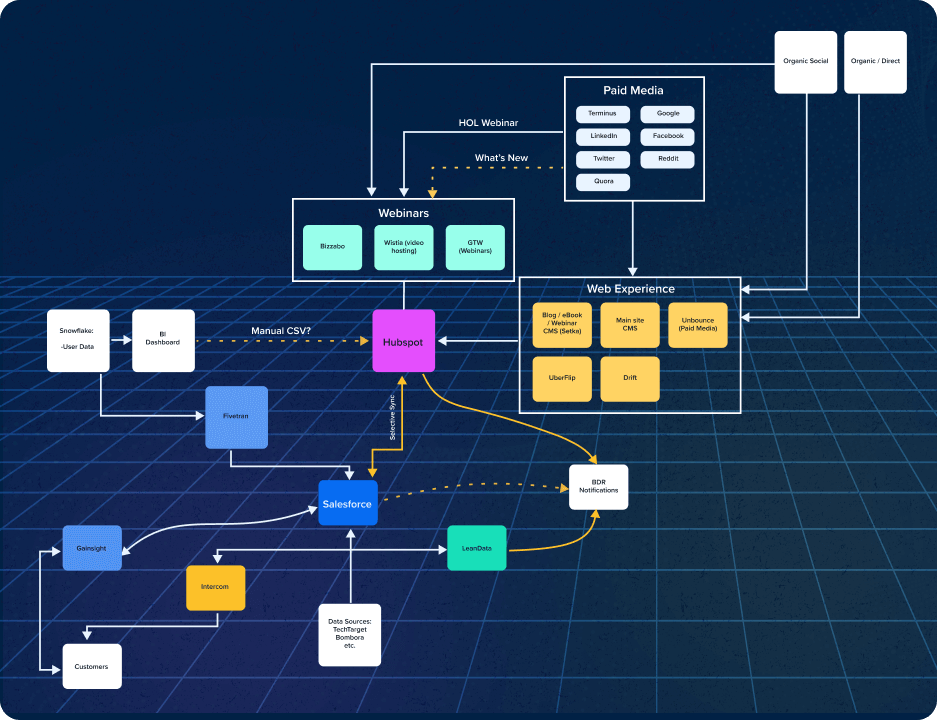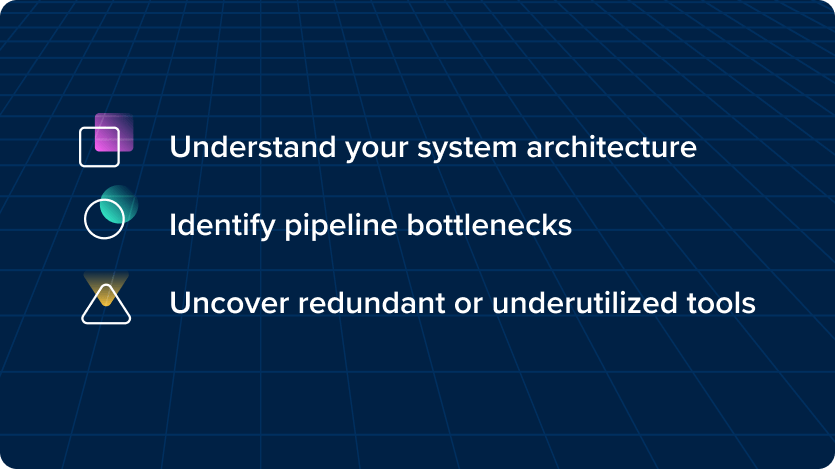RevOps often operates behind the scenes, fine-tuning your tech stack, streamlining workflows, and ensuring that data flows seamlessly between marketing, sales, and customer success. It might not sound flashy, but here’s the real impact: when systems run efficiently, leads move through the funnel faster, follow-ups happen at the right time, and pipeline bottlenecks get eliminated.
The result? Higher conversion rates and a more predictable path to revenue. Which helps your team not just meet but exceed their pipeline targets. Because at the end of the day, RevOps isn’t just about keeping things organized; it’s about fueling revenue growth. It’s literally in the name.

How Does RevOps Improve Pipeline Conversion Rates?
There are many ways, but maybe you’re wondering where you need to start, and we’ve got you covered. It may not be the most exciting and flashy way to uncover pipeline conversion missteps, but you’re sure to find ways to improve the process and drive more revenue. The key is identifying inefficiencies in your funnel, and you do that by building out a data flow map.
A data flow map is a visual representation of how leads move through your tech stack. Start by mapping out your platforms and tracking how leads enter, move between systems, and progress through the funnel. Keep it high-level, though. No need to get lost in the weeds (it can be scary in there).
The goal? A clear chart that follows leads from entry to closed-won, helping you spot inefficiencies and gaps. Bonus points if you include the customer lifecycle journey for deeper insights!
If you already have a data flow map, congratulations, you’re ahead of the game! But before you check this off your to-do list, ask yourself:
When Was Your Customer Lifecycle Journey Last Updated?

Your business, processes, and tech stack are constantly evolving. Have you added new tools, changed lead routing rules, or updated your scoring model? If so, your data flow map might be outdated.
Take the time to review and refine it. Ensure it accurately reflects your current systems, workflows, and handoff points so you can continue optimizing your pipeline and improving efficiency. An outdated map is almost as bad as having no map at all!
Creating a data flow map isn’t just a box to check but it’s a powerful tool for identifying quick wins and deeper, more complex challenges that need attention. Some inefficiencies will be easy to fix, while others may require bigger process changes.
That’s why we’ve outlined key takeaways your team will gain from mapping out your data flow. By understanding your system architecture, identifying pipeline bottlenecks, and uncovering redundant or underutilized tools, this exercise will help you streamline operations and optimize pipeline performance.
How to Streamline RevOps and Optimize Pipeline Performance

1. Understand the System Architecture
RevOps needs to know the systems and processes that are contributing to or hindering closed won opps. A data flow map provides a holistic view of your revenue engine, allowing you to spot inefficiencies, optimize handoffs, and ensure that data flows seamlessly between teams. Start simple. You don’t need to document every last detail from the beginning. Instead, focus on the core process, and with each iteration, layer in more context and insights.
You may not know or have access to all systems, so talk to key stakeholders to understand their workflows, challenges, and data dependencies. Their insights will help refine your process map and make sure it reflects reality and not just an idealized version of how things should work.
2. Identify Data and Opportunity Bottlenecks
RevOp’s main motivation is to improve pipeline conversion rates and help the organization close more deals. By mapping out your data flow, you’ll quickly spot areas that are overly complex, inefficient, or missing key connections.
- Are sales reps spending valuable time on manual tasks that could be automated, allowing them to focus on selling instead?
- Is critical data siloed in a tool that, if integrated properly, could provide deeper insights for marketing and sales optimization?
- Are leads being routed effectively, or are there delays that slow down conversion rates?
- Are sales processes overly complex and convoluted? Are there too many steps or approvals that can make it harder for sales teams to close deals efficiently?
3. Identify Any Redundant or Underutilized Tools
This one’s simple: save money. Is that shiny tool John purchased two years ago still gathering dust and failing to deliver any significant ROI? If it’s just adding to your platform costs without providing value, it’s time to let it go. Underutilized tech that isn’t actively managed by a team is a waste of both money and time. Plus, you may already have another tool in your stack that offers the same functionality. For example, Digital Reach recently helped a client who was using both Mailchimp and HubSpot for email marketing. While Mailchimp was initially added for a specific, niche use, HubSpot could easily cover that role, too. We helped the client identify this redundancy, and they were able to save on renewal costs.
Here are a few martech features we often see with platform overlap:
- Landing Page Creation
- Meeting Schedulers
- Social Media Scheduling & Management
- Survey & Form Tools
- Email Verification
Before jumping into a new platform, take stock of your current tools—especially if you’re a HubSpot customer. You may already have the features you need or access to similar services within HubSpot itself.
Final Thoughts
It may not be the most glamorous solution, but it certainly uncovers numerous opportunities to streamline your pipeline processes and ultimately help you close more deals. By identifying inefficiencies and optimizing the flow of data, you’ll unlock significant improvements that drive better conversion rates. If you’re looking for guidance on how to navigate this process, the Digital Reach team is here to help. We specialize in uncovering data insights that can unlock the full potential of your pipeline, and we’d be more than happy to support you every step of the way.




